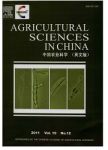Telecoupled land-use changes in distant countries
Telecoupled land-use changes in distant countries作者机构:Center for Systems Integration and SustainabilityMichigan State University Institute of Soil Fertilizer and Environment ResourcesHeilongjiang Academy of Agricultural Sciences
出 版 物:《Journal of Integrative Agriculture》 (农业科学学报(英文版))
年 卷 期:2017年第16卷第2期
页 面:368-376页
核心收录:
学科分类:12[管理学] 1204[管理学-公共管理] 120405[管理学-土地资源管理]
基 金:financial support from the National Science Foundation Michigan State University Michigan AgBio Research,United States
主 题:agricultural land-use changes soybeans spatial attributes telecoupling moving window analysis
摘 要:International food trade has become a key driving force of agricultural land-use changes in trading countries, which has influenced food production and the global environment. Researchers have studied agricultural land-use changes and related environmental issues across multi-trading countries together, but most studies rely on statistic data without spatial attributes. However, agricultural land-use changes are spatially heterogeneous. Uncovering spatial attributes can reveal more critical information that is of scientific significance and has policy implications for enhancing food security and protecting the environment. Based on an integrated framework of telecoupling (socioeconomic and environmental interactions over distances), we studied spatial attributes of soybean land changes within and among trading countries at the same time. Three distant countries -- Brazil, China, and the United States -- constitute an excellent example of telecoupled systems through the process of soybean trade. Our results presented the spatial distribution of soybean land changes-- highlighting the hotspots of soybean gain and soybean loss, and indicated these changes were spatially clustered, different across multi-spatial scales, and varied among the trading countries. Assisted by the results, global challenges like food security and biodiversity loss within and among trading countries can be targeted and managed efficiently. Our work provides simul- taneously spatial information for understanding agricultural land-use changes caused by international food trade globally, highlights the needs of coordination among trading countries, and promotes global sustainability.



